Spotting a platypus in the wild remains an elusive experience for most.
One lucky man who hasn't only got a ripping platypus after-dinner tale to share with his friends, but also the video to prove it, is Danish man Jens Ejsenhardt. While visiting Australia in 2019 in the hope of spotting one of the elusive monotremes, Jens was lured by Canberra friend Thim Skousen to Tidbinbilla Nature Reserve.
Not long after arriving at the reserve's wetlands, Thim noticed a platypus on the shore of a dam and because it was so still, "thought it was dead". Intrigued, the group approached it. At one stage the platypus was less than a metre from the feet of Marianne Fabricius, Jens' wife.
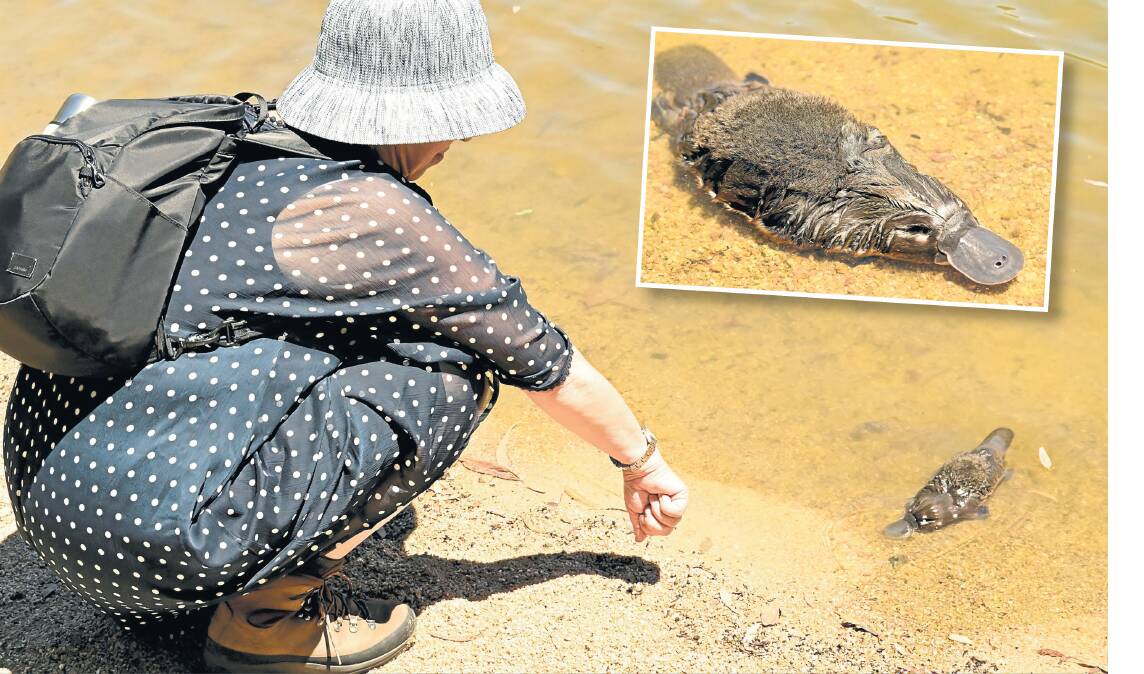
"By the time we all got close, it suddenly started moving around," reveals Jens. "Thim was of the understanding that platypus are normally active at dawn and dusk, and as this was the middle of the day, we concluded that it was a youngster attempting to 'turn day into night'," explains Jens.
Jens' theory was confirmed by rangers at the visitor centre who gladly accepted a copy of Jens' video which now also features in CMAG's Platypus: A Curious Creature.
"One funny detail about the video is that you could hear us talking in Danish that it was a good thing that we looked closer at the 'dead' platypus," laughs Jens.
Fun facts that really fit the bill
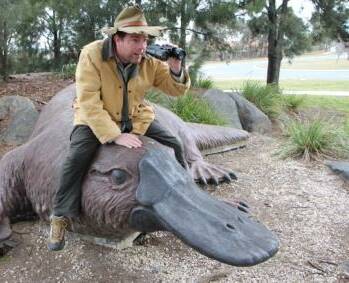
The exhibition: Platypus: A Curious Creature is on show at CMAG from Monday January 16 to Sunday June 18. Opening times Monday to Friday: 10am-4pm (café open 8.30am-3.30pm). Saturday and Sunday: 12pm-4pm (café open 12pm-4pm)
Collector talk: Karen Collins will be in conversation with Jed Pearson (ACT WaterWatch) on February 1 - bookings through the CMAG website: www.cmag.com.au.
Kids' activities: From March 1 at CMAG, kids can make a platypus paper bag puppet (no booking required) as part of the museum's "Makerspace" free children's activities. Platypus-themed books for children and parents to read together will also be available.
Did You Know? The platypus (Ornithorhynchus anatinus) or mulanggang (Ngunnawal language) is unique to Australia and one of only two monotremes in the world (the other being the echidna). A monotreme is a mammal that lays eggs and has no teats - young feed on milk from pores on their mother's belly. When British scientists first saw the platypus, they did not believe it was a real animal - they thought it was a duck's beak, an otter's body and a beaver's tail stuck together!
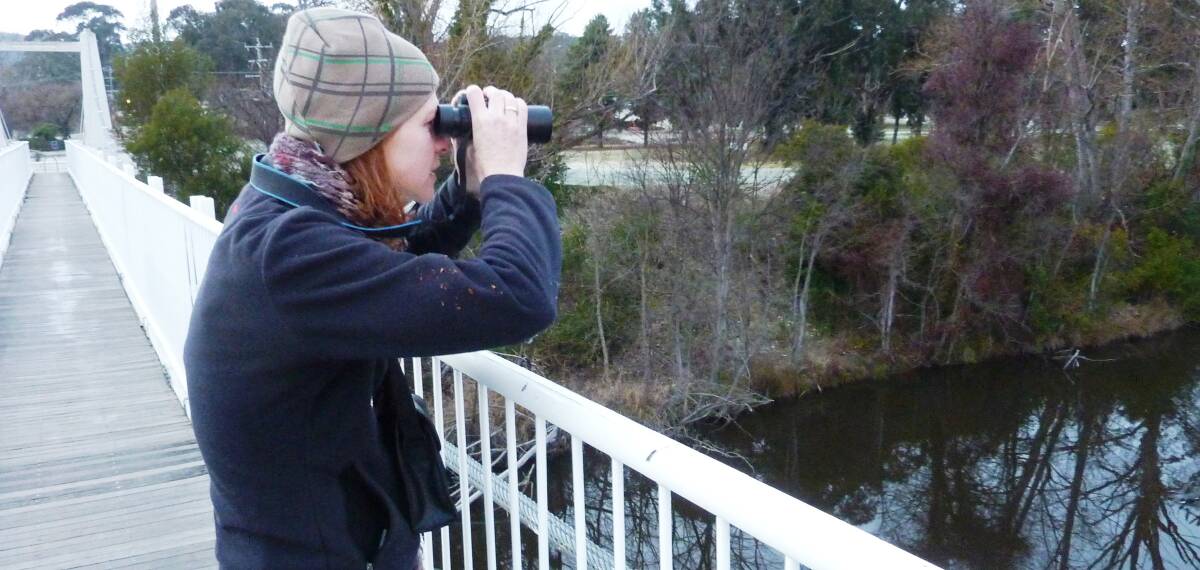
Red List: Platypus numbers are decreasing due to climate change, urban expansion, pollution, and threats from invasive species. As a result, they have been classified as "near threatened" by the International Union for Conservation of Nature (IUCN). Multiple conservation efforts are being made across Australia to help boost numbers and protect their habitats.
Did You Know? The collective noun for platypus is a paddle.
Platypus spotting: Apart from the Molonglo River near Coombs and the wetlands at Tidbinbilla Nature Reserve, there are several other "hot spots" for platypus spotting in and around Canberra. These include Queanbeyan River (especially the stretch between the main street and Dane St), Jerrabomberra Creek (near the footbridge and bird hide accessed via Newcastle St in The Causeway) and the Murrumbidgee River, (especially Point Hut Crossing, Pine Island, and Casuarina Sands).
Hats off to passionate platypus buff
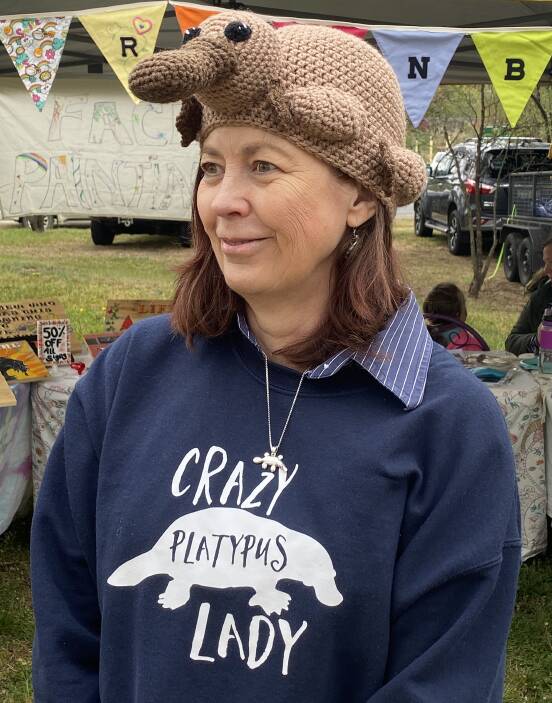
Not many people could proudly wear a "Crazy Platypus Lady" shirt with the pride and aplomb that mother of two Karen Collins of Coombs can. In fact, if she had the chance, she'd also don a platypus-themed hat, scarf, socks, slippers, you name it. Karen is one platypus-obsessed lady.
But it hasn't always been that way.
Sure, like many Australians, as a child she loved native animals, in particular cuddly koalas, but the equally elusive platypus was never really on her radar.
Her fixation with the mysterious monotreme didn't begin until, when in 2005, her daughter brought home a print of an animal that she'd drawn at school.
"To be different (just like the platypus!) to all the other kids, she chose to draw the platypus," recalls Karen, "and I loved it."
Soon after, on a visit to the National Museum of Australia, her eight-year-old son was searching the museum shop for a birthday present for his mum. "In secret consultation with his sister, he spent his pocket money on a tiny platypus finger puppet, 'Platypet'," recalls Karen. "Shortly afterwards the kids suggested that I should start a platypus collection."
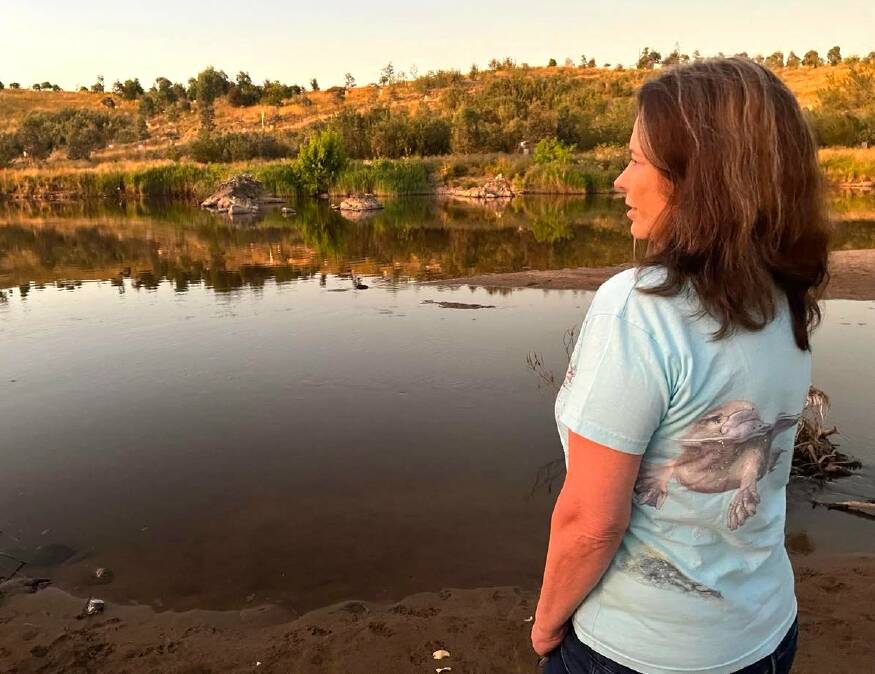
Since then, Karen has amassed more than 350 objects, or what she likes to call "platyphernalia".
Almost all the items in her collection are gifts.
"First, my mother drove to all the op shops and markets collecting platypus broaches, earrings and figurines to give me," reveals Karen. "Then a girlfriend who likes to sew made me platypus Christmas decorations." It was out of control.
"Since 2005, Christmases and birthdays have yielded a generous haul of platypus gifts from friends and family," explains Karen.
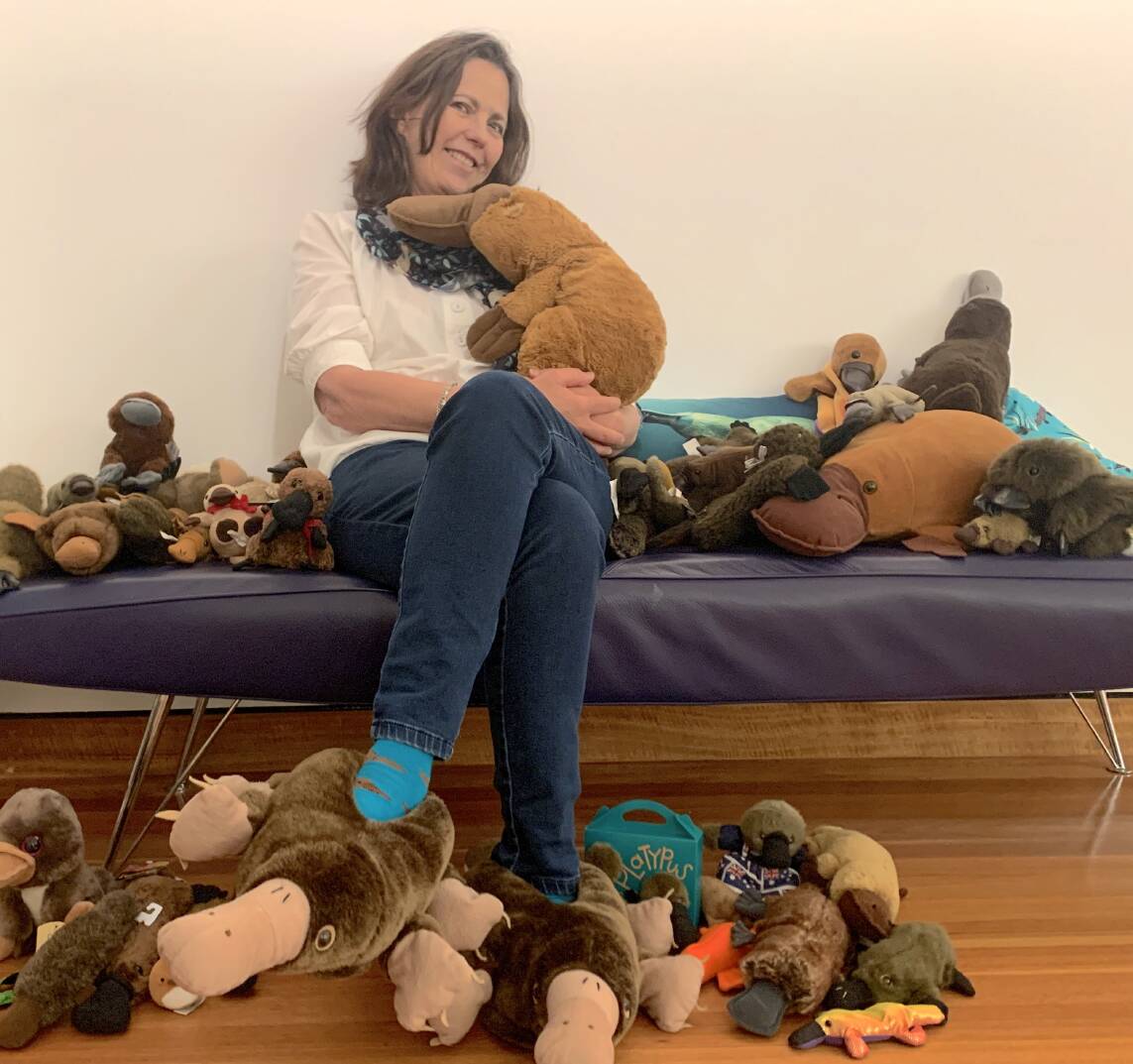
Yes, she's got one of those mini mascots from Expo'88 in Brisbane, bagged multiple "Syds" from the Sydney Olympics, and has a stash of those vintage Commonwealth Bank money boxes as well as an eclectic array of jewellery. "Then there's all the crockery, the jugs and plates and cups, cushions, artwork, and signs".
So, given the extent of her collection, is her home a shrine to platypus? Despite the 350 items, apparently not.
"It is not always obvious to visitors that our home harbours so much platyphernalia, for they hide - their burrows being drawers and cupboards and even the garden," muses Karen.
However, if you pop into the Canberra Museum and Gallery (CMAG) from January 16 there's absolutely no chance you'll miss Karen's amazing assortment of platyphernalia. Platypus: The curious creature, an exhibition featuring almost all 350 items, will wow visitors until June 18.
Despite her obvious passion for the platypus, it wasn't until 2008 that Karen eyeballed her first live platypus in the wild. "It was down at the platypus reserve in Bombala," she recalls, "it was brilliant." But her best wild encounters were still to come, and surprisingly much closer to home.
In fact, when the Collins family moved to the Molonglo Valley five years ago, Karen "never dreamed" she "would have platypus as neighbours".
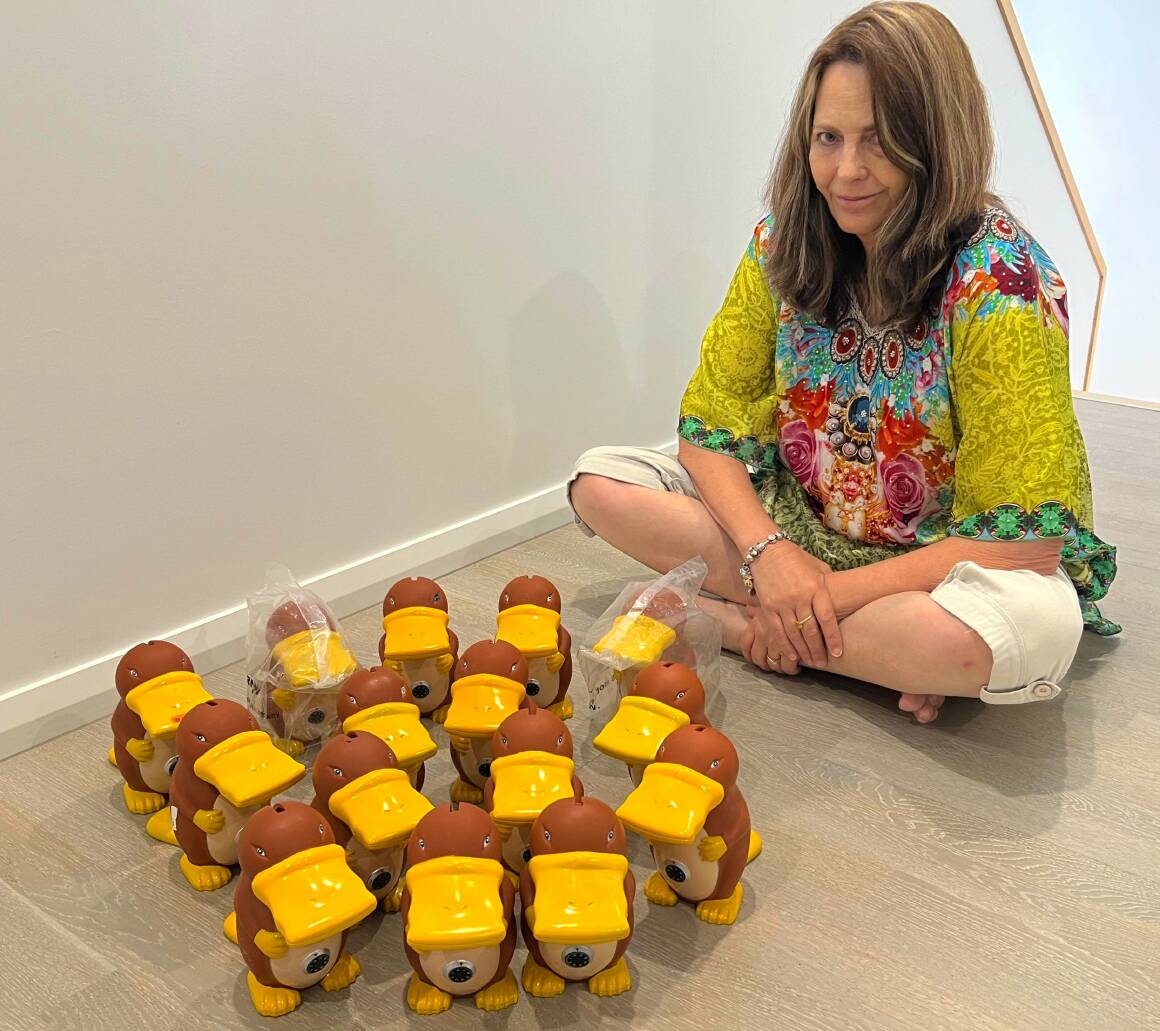
"Then one day, my son and I walked down an overgrown track to the river's edge at the peninsula in Coombs. We stepped over a small hump between the overgrown grass onto a narrow sandy embankment... and there it was! A platypus resting in the winter sun, barely a ruler length from my son's foot. We froze, the platypus raised its head to us and swiftly paddled to the other side of the river."
Karen and her family have since observed platypus numerous times, including one two-week period at dusk where they would regularly watch "two paddling around, feeding and diving".
On one of these occasions, her husband Craig noticed some peculiar prints in the sand.
Luckily, he snapped a photo, because, of course, it belonged to a platypus.
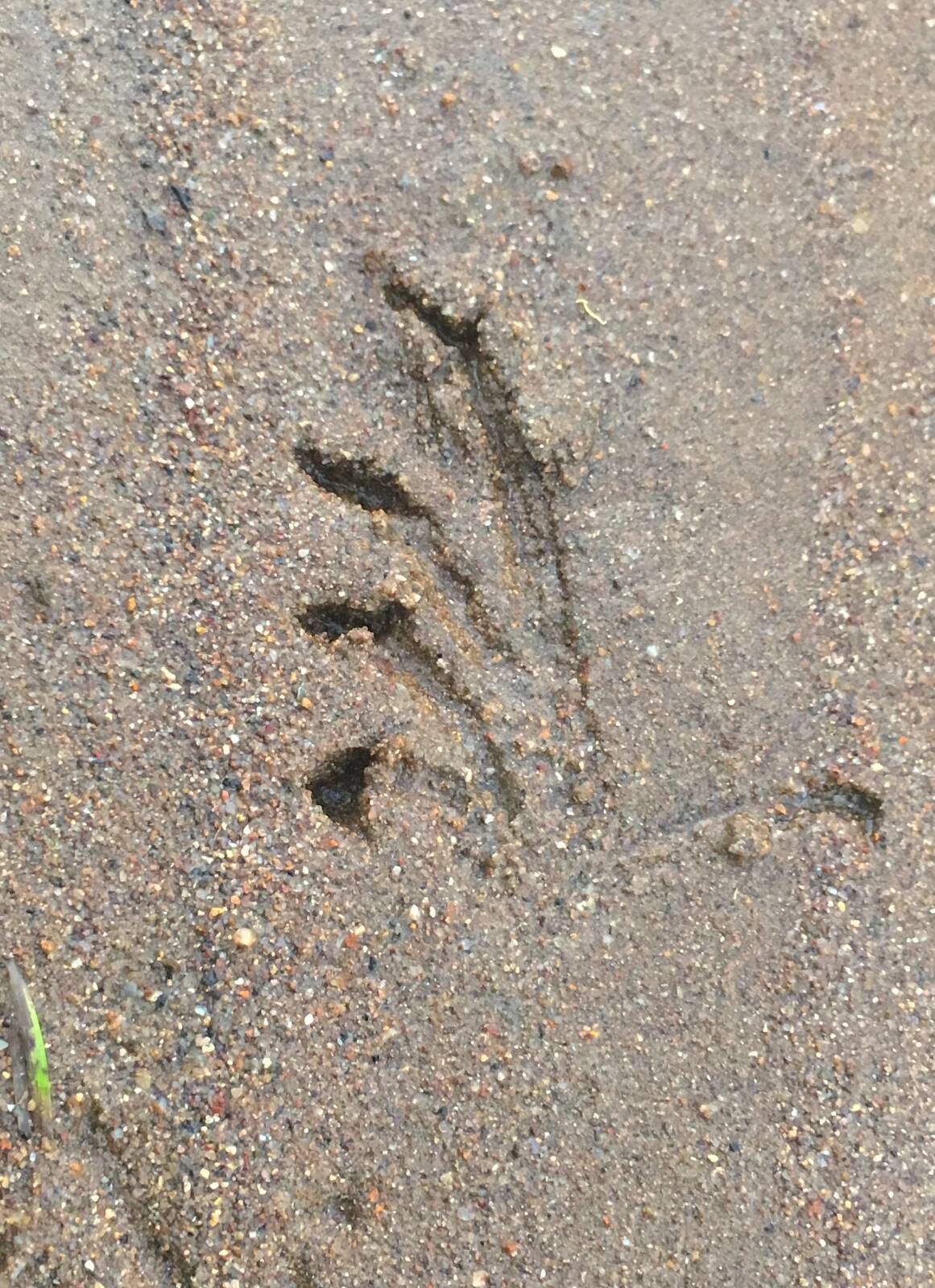
"Apparently it's quite rare to record such distinct a track," explains Karen. "The rangers at Tidbinbilla told me they have tried to get a plaster cast of similar tracks by releasing a platypus onto a muddy bank, but they failed to get anything as good as ours."
While Karen admits "it's their unique appearance that makes platypus so endearing", she also confesses "cuteness helps too!" I have to agree.
WHERE ON THE SOUTH COAST?
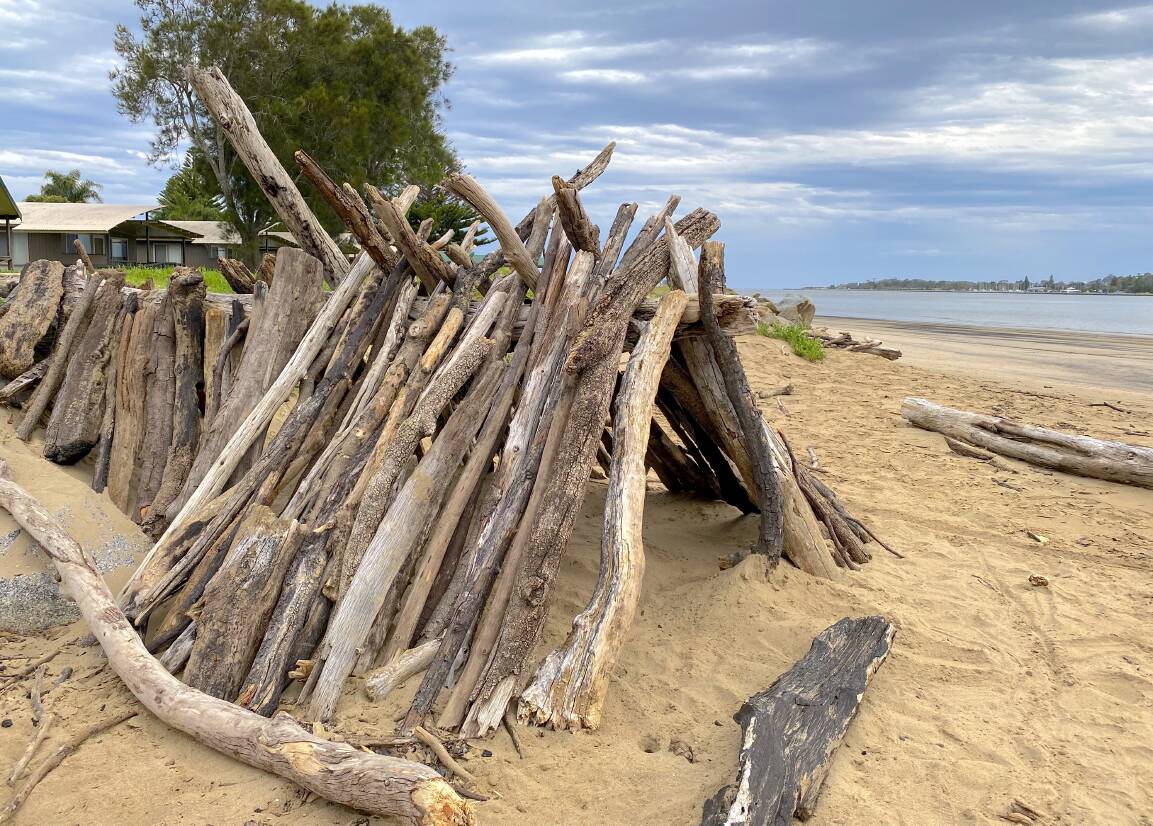
Rating: Medium
Clue: Out with the old, in with the new.
How to enter: Email your guess along with your name and address to tym@iinet.net.au The first correct email sent after 10am, Saturday 6 January, wins a double pass to Dendy, the Home of Quality Cinema.
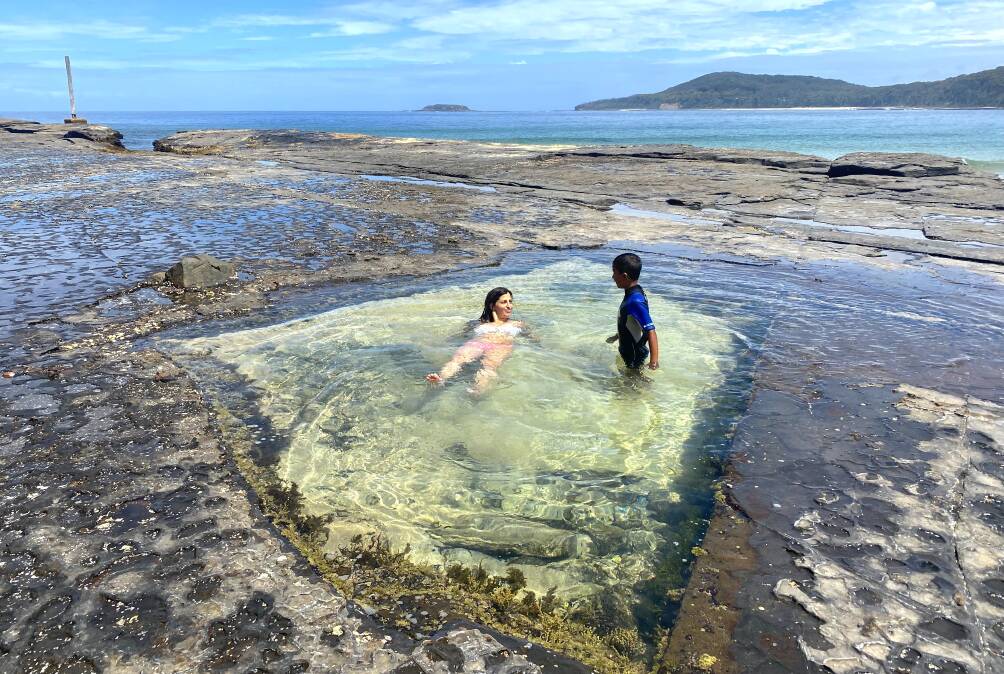
Last week: Congratulations to first-time winner Scott Sievert of Rivett who was the first to correctly identify last week's photo as a rock pool at Pebbly Beach in Murramarang National Park. Not far from the rock pool are the remains of a timber processing operation dating from the 1920s from where the timber was loaded onto ships from the rock platform at the northern end of the beach. There was also a tramline connecting the loading area to the actual mill which was between the picnic area and beach. The main challenge with the timber processing operation at Pebbly Beach was transporting the logs down the steep slopes from the surrounding forests and onto the beach. Sadly, a horse or two died in these operations.
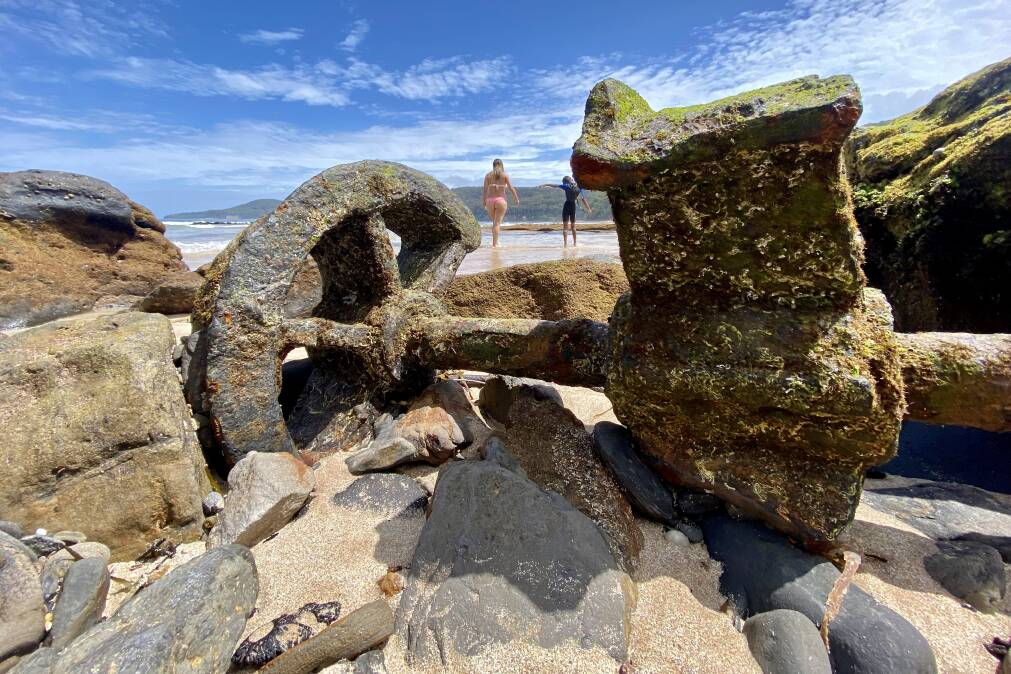
Letter from the King
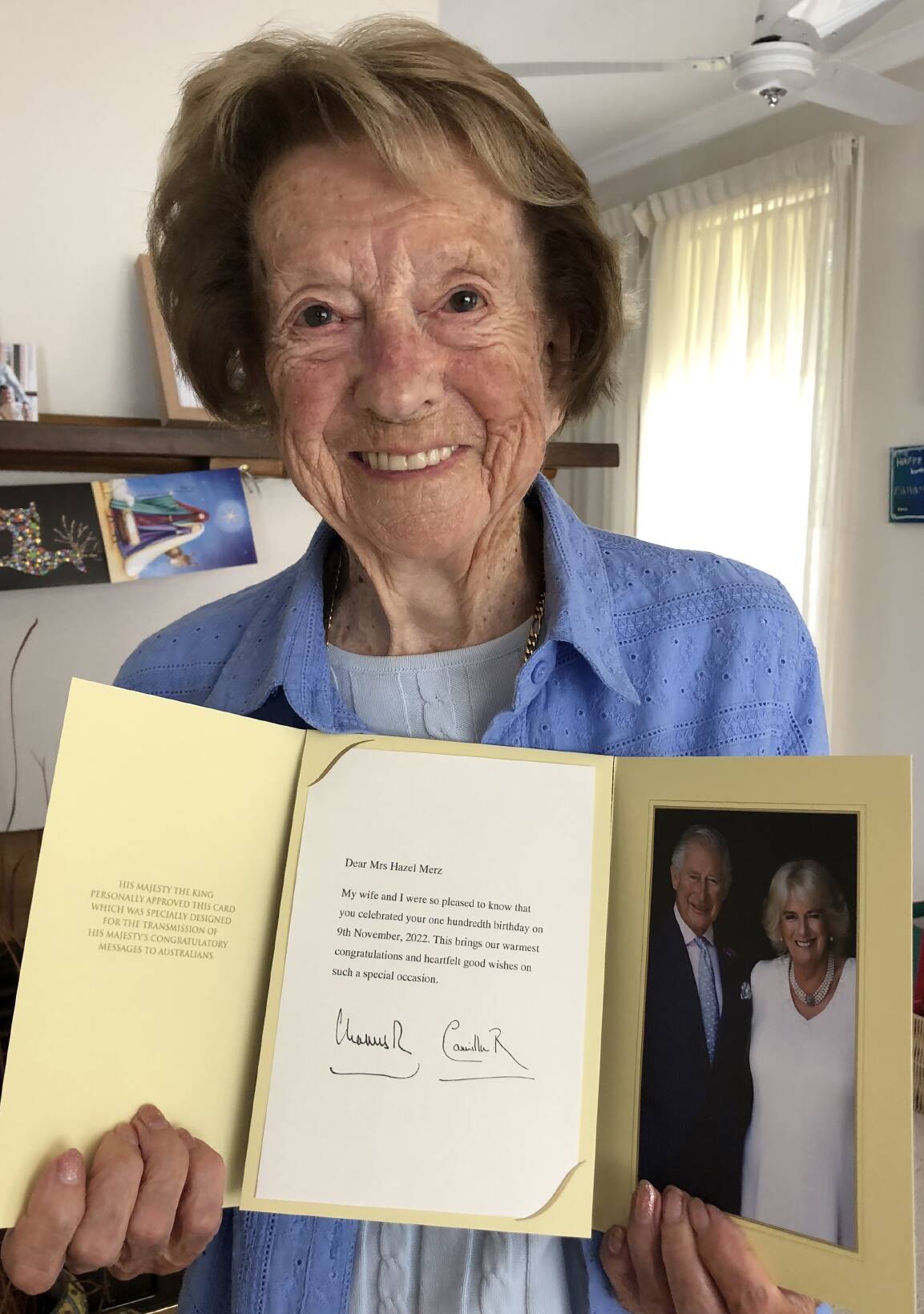
In October last year, this column asked how long it would take for letters from King Charles III to start arriving in the letterboxes of Australians celebrating their 100th birthday. Well, it appears the congratulatory letters have finally started to arrive. Cheryl Williams can report that her mother, Hazel Merz, who has lived in Yarralumla since 1956, was overjoyed to receive a letter from the "King and his wife" which arrived by standard post last week to mark her centenary on November 9, 2022. Belated Happy Birthday Hazel.
CONTACT TIM: Email: tym@iinet.net.au or Twitter: @TimYowie or write c/- The Canberra Times, GPO Box 606, Civic, ACT, 2601







